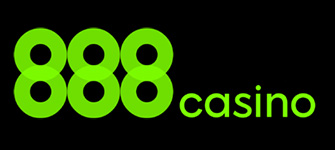How to Play Roulette
Every casino player would tell you that roulette is an extremely simple game. At the same time, most experienced gamblers avoid it and prefer a game they have a better chance of winning. The reason is very simple – it is chance, not skill or knowledge that is the most important factor for success or loss.
To play roulette you need nothing more than a table, a layout, a roulette wheel, some coloured chips and a dealer to take your money. The game is a pretty straight-forward one – you choose a number or a group of numbers, place a bet and play at a house edge of 2.63% or 5.26% in American roulette. The dealer, called in roulette a croupier, spins the wheel and you hope you guessed correctly. If you did, you win the respective payout for your bet. If you failed to predict the lucky number, you lose the chips you gambled.
The winning numbers are determined randomly by the position of the ball on the roulette wheel. The word roulette comes from French and it actually means little wheel. The roulette wheel has 37 or 38 pockets, depending on the type of roulette played. On European and French-style games, you will find numbered pockets from 1 to 36, along with a zero pocket (0), while the American roulette game has an additional pocket for the double zero(00). Players can place as many bets as they wish, but they do have to keep in mind that not all bets are paid equally.
- ✓ Basic Elements
- ✓ The Chips
- ✓ The Wheel
- ✓ Betting Layout
- ✓ Placing Bets and Odds
- ✓ Inside Bets
- ✓ Outside Bets
- ✓ House Edge
- ✓ Racetrack and Call Bets
- ✓ How to Play
Bets that are low in probability (inside bets) pay much more than bets that encompass a larger group of numbers (outside bets) and thus are more likely to come up. Roulette is by no means a complicated game, but that does not mean it is easy to beat the odds. The player is free to bet on any of the available numbers, with the zero and the double zero being considered the house numbers. In other words, these are the numbers that bring the house an advantage over the players.
You can, of course, bet on zero, which would pay 35 to 1 at odds of 36 to 1 (37 to 1 in American roulette), and it would be treated as a regular bet. But before we look at the betting and the odds of roulette, players should first become familiar with some of the basics of the game.
Basic Elements of Roulette
Whether you play a roulette game with a physical wheel in a brick-and-mortar casino or an electronic version online, you will need to know several essential elements of this casino classic. Understanding them will help you differentiate between games with a higher house edge and games that are intrinsically more favourable to you.
The Chips
Just like in any casino game, players need to purchase chips before sitting at the roulette table. But unlike poker and other casino games with chips, chips here have an additional function. Typically, they just represent the different denominations but on the roulette table, each player is given an individual set of differently coloured chips. Their value is usually the minimum bet allowed for this table. In some versions of roulette, however, every colour is associated with a different denomination. These chips are also referred to as cash chips as their actual value is written on them.
When playing virtual roulette, players will immediately notice that they are given chips in at least five or six different colours. Of course, every colour is associated with a different value. The reason for this is very simple – it is you against the house, with no one else playing beside you. Both you and the dealer would know how much money you are betting by the number of chips on the table. If 1 chip represents $10 in real life, then 10 chips would be $100 (no need for identification on the chips themselves).
All of this only applies to the physical version of the game; the type that you will find at a land-based establishment. While online casinos do feature chips, they are there more for stylistic reasons than practical ones. Chips are not needed in virtual roulette since you are either playing alone or the software can easily track your bets and those of the other players without the need for colour-coded pieces of plastic. If you play online for the feeling of it all, this can have some effect on your experience. It will not be large but it will be noticeable.
The Wheel
One of the essential parts of the game is, of course, the roulette wheel. Traditionally, this is a wooden cylinder that spins around its central point. It is divided into 18 black and 18 red slots, called pockets, as well as one or two green pockets which are for the 0 and the 00 (where available). Consecutive numbers are never placed next to each other. Instead, they are opposite each other as much as possible, while every red number is surrounded by two black numbers and vice versa.
In fact, this is a common rule in all roulette wheels, no matter the type of game – two adjacent pockets are always in different colours. Low and high numbers alternate as much as possible, although this is better represented in European-style roulette wheels. Low numbers are those from 1 through 18, while those from 19 through 36 are called high numbers.
There are some differences between the various roulette wheels out there. Specifically, in how the numbers are laid out on the wheel. We see this difference in the two main styles of roulette – American and European (which also includes the French variation of the game).
The European tables will use a roulette wheel that uses the following sequence:
0-32-15-19-4-21-2-25-17-34-6-27-13-36-11-30-8-23-10-5-24-16-33-1-20-14-31-9-22-18-29-7-28-12-35-3-26
On the other hand, the American games will feature the numbers in the following order:
0-28-9-26-30-11-7-20-32-17-5-22-34-15-3-24-36-13-1-00-27-10-25-29-12-8-19-31-18-6-21-33-16-4-23-35-14-2
This is not something you generally think about nor is it immediately noticeable. Only taking a closer look at the wheel would reveal this discrepancy. However, does it have an actual effect on the game itself? Outside of the inclusion of the double-zero pocket in American Roulette, the pocket sequence has little to no impact on the odds. After all, it is a game of pure chance. Still, if you are placing Call Bets, e.g. Voisins du zéro, Jeu zero, or Orphelis, you might be surprised at the end result if you have switched between the two variations.
Once players place their bets, the croupier or dealer spins the wheel using one hand, while tossing the ball in the opposite direction. The wheel is often spun clockwise, while the ball is thrown counter-clockwise. The wheel rotates slowly and the ball rolls along the side for good 8-10 rotations. Please note that you can only place bets before the wheel is spun or shortly after that. When the croupier raises his hand, this means “No more bets”, so you can no longer make or change your bet until the next spin.
Betting Layout
Now that we have gone over a couple of basics, let us see what a standard roulette layout looks like. This is where the bets are placed, so all numbers from the wheel are arranged here in a three-column chart. The design itself might differ greatly depending on the casino, but the basic elements will remain the same.
All numbers from 1 through 36 are placed within the main grid of the chart, with the zero or double zero located on top of them. Along with the three columns, the chart is also divided into three large rows, each designating a third of the numbers. Players can bet on each of these dozens of numbers (1 to 12; 13 to 24; and 25 to 36) by placing chips on sections of the layout that are outside the main grid.
Even further from the black and red numbers in the chart, we will find another six betting sections. In two of them, players can wager on numbers from 1 to 18 or on numbers from 19 to 36. Another two sections are designated for betting on black or red, while the last two sections of the layout are where the even/odd bets are placed.
Remember this layout well; for explaining bets would be pretty difficult without this sort of visual aid.
Placing Bets and Odds
When it comes to placing bets, the game of roulette is very convenient and easy to understand. As you can see, the layout is pretty straight-forward and intuitive. All you need to learn are the various combinations and how to use them to get the most out of your bet. Players can bet on a specific number or groups of numbers by placing their chips on the main part of the layout. These bets are called inside bets, whereas outside bets cover even/odd, red/black, high/low, as well as the other sections of the layout that are located outside the main numbered grid.
As mentioned above, the payout for each bet depends on how probable it is to win. There is a mathematical probability that shows how likely it is for the ball to fall on a specific pocket on the wheel. Along with the payout offered by the casino for each winning bet, these odds determine the house edge of each roulette game. This will be explained further in detail but let us first look at the type of bets and their payouts.
The odds of each bet against winning is shown for French/European versions of roulette where the wheel has 37 pockets, the black and red numbers from 1 through 36 and the single zero, which is in green. The American style of the game has worse odds and is, therefore, never preferred by players.
Inside Bets
Straight – This is a bet on any single number, regardless if it is black, red, odd, even, or the zero. The chips are placed in the centre of the square. You can make as many single bets as you wish and the odds against winning will still be the same for each number – 36 to 1, or 2.70%. The payout, however, is 35 to 1, meaning you will win $35 for every $1 wagered.
Split – Any two neighbouring numbers, vertical or horizontal such as 11 and 12 or 20 and 23. The chip is placed on the line between the two numbers and the odds are 5.40%, while the payout is 17 to 1.
Street – Any three numbers in a horizontal line, as it is with 7, 8, 9, for example. The dealer will lay the chips on the edge of the horizontal line either on the left or the right side. The payout here is 11 to 1.
Square or Corner – Any four numbers in the grid that make a square. Such numbers would be 10, 11, 13 and 14. The chips are placed in the centre of the four numbers. The payout is 8 to 1.
Six Line – Also known as a “double-street”, this bet is placed in 2 adjacent streets, or two neighbouring horizontal lines. An example of this would be 4, 5, 6, 7, 8, and 9. And the payout is 5 to 1.
Outside Bets
High/Low – This is a bet on either one of the halves, the high or the low numbers. The “low” refers to the numbers 1-18, while the “high” to the numbers 19-36. The payout is even or 1 to 1.
Red or Black – With this number, you guess whether the winning number would come up red or black. And, of course, the payout is once again 1 to 1.
Odd/Even – Again, you can bet on either an odd or an even number and the odds remain 1 to 1.
Dozen Bets – The numbers are grouped into three dozens: from 1-12; 13-34 and 25-36. Betting on a dozen will pay 2 to 1.
Column Bets – Just like the name suggests, the bet is placed on one of the three columns – [1, 4, 7, 10, 13, 16, 19, 22, 25, 28, 31, 34]; [2, 5, 8, 11, 14, 17, 20, 23, 26, 29, 32, 35] or [3, 6, 9, 12, 15, 18, 21, 24, 27, 30, 33, 36].
House Edge
One of the basic concepts in gambling is that the casino always wins. Even if you win big, even if you are on a winning streak, the casino will always win in the long run. Games are made to be favourable to the casino and the term house edge refers to the advantage it has over its patrons. In fact, it is represented in exact percentages that show how much of all bets the casino would keep on average.On the flip side, we have the return to player metric, which shows the total percentage of bets paid out to players as winnings. Together the two values make up 100% of the total cash turnover at the table.
The best way to explain the house edge in roulette is probably with the so-called even bets. These are red/black, high/low, and even/odd. Some people would think that there is a 50/50 chance to win if you place one of these bets. But this is not true – they forget the zero, which is green and is neither high/low nor even/odd. In fact, the odds of hitting red or black are less than 50% at 48.60% (47.40% for American roulette). The house edge, therefore, comes from the difference between the 1:1 payout and the odds, which are less than 1:1. The exact percentage is 2.70% for European roulette and 5.26% for American roulette.
We can use tried and tested mathematical formulas to calculate the house edge of any given bet. To do so, we have to take into account the odds against winnings (also called true odds), the payout odds (also called house odds), and the probability of success. We put these into the following equation:
(Odds Against Winning – House Odds) * Probability of Winning * 100 = House Edge
If we take the red/black bet from European Roulette, for example, we would have the following problem:
(19/18 – 1/1) * 18/37 * 100 = 2.70%
The same formula can be applied to any other bet in the game. It does not matter what type or its probability of success, the formula is good for all of them. Let’s take the same red/black wager but from American Roulette. This is how it would look:
(20/18 – 1/1)*18/38*100 = 5.26%
The one exception to the general house edge values of 2.70% and 5.26% for European and American Roulette, respectively, is the Basket Bet. It is found solely in the American variation and covers the pockets 0-00-1-2-3. There is no equivalent in European Roulette due to the different betting layouts.
The Basket Bet offers a payout of 6 to 1. On the surface, it does not look too bad. However, once we get into the math, we see that there is a vast difference between the Basket Bet and all other wager options at the table. If we apply the formula from before, we get:
(33/5 – 6/1)*5/38*100 = 7.89%
In the 33/5 fraction, 33 represents the non-winning numbers, while the 5 is for the winning one. The 6/1 are the payout odds, while the 5/38 fraction represents the odds of winning – 5 winnings numbers out of 38 numbers in total. This brings us to a house edge of 7.89%, which is significantly higher than the 5.27% standard. Based on this, we can say with certainty that the Basket Bet is the worst bet option at an American Roulette table. If you are aiming at optimal odds, it is a bad idea to take this wager.
Racetrack Layout and Call Bets
There is an additional group of bets, available mostly in European and French roulette games, and they are known as call bets or announced bets. Their name comes from the idea that it is impossible to place your chips on the layout when betting on a large combination of numbers. Instead, you only announce your bet and the croupier places the chips on your behalf. In virtual games, there will likely be a button that corresponds to the appropriate call bet and the numbers are selected automatically.
A special layout has been devised where you can see how the numbers are positioned on the wheel. Due to its shape, it is called a racetrack and on it, you can place chips if you wish to bet on larger sections of the wheel.
There are several types of call bets and their names are often in French, although some of them are actually common in the German casinos. What’s notable about these wagers is that they involve multiple combinations of bets, depending on what you are betting on. Unlike outside bets, where the wager covers all possible options, a call bet is a collection of several smaller wagers. Since each of these smaller wagers has to be placed independently with a chip of its own, call bets are more expensive than outside bets based on what you stake upfront.
The first one is Voisins du Zéro, which translates as “Neighbours of zero”, and covers 17 pockets on the wheel – the zero plus 8 pockets on either side. To participate in a Voisins du zero call bet, you have to put down the following separate wagers:
- 2 chips on the 0-2-3 option
- 1 chip on the 4-7 split
- 1 chip on the 12-15 split
- 1 chip on the 18-21 split
- 1 chip on the 19-22 split
- 2 chips on the 25-26-28-29 corner
- 1 chip on the 32-35 split
The second special bet is Tiers du Cylindre or “Third of the wheel”, which is the area roughly on the opposite side of Voisins du Zéro. It covers 12 numbers and requires you to put down 6 split bets to complete the collection.
Les Orphelins, which literally translates as “The orphans” is yet another call bet. It includes the two small sections of the wheel that are not included in Voisins du Zéro and Tiers du Cylindre. When you place this bet, you bet on 8 numbers. Specifically, this call bet is made up of four splits and one straight-up bet; and they go as follows:
- 1 chip on the 1 pocket
- 1 chip on the 6-9 split
- 1 chip on the 14-17 split
- 1 chip on the 17-20 split
- 1 chip on the 31-34 split
There is another call bet that covers an even smaller portion of the wheel. This is Jeu Zéro, or “Zero game”, and includes the zero, as well as the six numbers that are the closest to it. For European roulette, these numbers are 12-35-3-26-0-32-15, as they appear on the wheel. The following wagers are placed:
- 1 chip on the 0-3 split
- 1 chip on the 12-15 split
- 1 chip on the 32-35 split
- 1 chip on the 26 pocket
All of the above-mentioned bets are fixed call bets, but there are also some variable bets such as the so-called “… and neighbours”. This means that you can pick any number, as well as five of its neighbours. The actual number of chips required for a neighbours bet will vary, depending on the numbers involved. It could be anywhere between 5 and 14 chips, based on what you choose.
Another type of variable bet is the “Final bet”, with which you can bet on all numbers ending in 5, for example. These would be 5, 15, 25, and 35. Since these numbers are far apart from each other on the layout, they require a separate bet for each.
As far as the odds of the call bets are concerned, they follow the standard for the table. Since all call bets are made up of multiple separate bets, it is the inherent house edge values of those separate wagers that count.
How to play the game
Now that we know what is what on the table, it is time to move on to actually playing the game. In order to win, you need to predict correctly where the ball would fall after each spin. When you play traditional roulette in a brick-and-mortar casino, this will be a matter of pure physics – the speed of the spinning wheel, how the ball was thrown on it, whether the surface of the table is completely flat, etc. However, a large number of casinos use electronic wheels, which are fully automated and run at a constant speed with no real deviation.
What’s interesting about physical wheels is that over time, they might develop biases. As the material gets worn out after millions of spins, the ball might be more likely to land in certain pockets than others. Usually, casinos replace the equipment on a regular basis so this almost never becomes an issue. Still, it is an interesting piece of trivia nonetheless.
Virtual roulette found in online casinos is also completely random, which makes the game fair. This is done by employing a piece of software called Random Number Generator (RNG). In fact, all casino games online, as well as all video games, use RNG in order to prevent cheating or exploiting potential weaknesses such as repeating patterns. The RNG generates long sequences of random numbers, one of which is picked as soon as you push the Spin button. In these games, the outcome is determined before the wheel stops spinning and each round is independent of the previous or the next one. The spinning you see is just a visual representation of something that already happened.
That is why devising a strategy for winning in roulette is impossible. All rumours regarding any sort of a “winning betting strategy” are purely a work of fiction and nothing more. There isn’t any “sure” way to win at roulette; it is all about mathematical probabilities. That is why the only real advice I can give you is to play in a European/French style casino, where the house has a significantly lesser chance of winning.


 PlayOJO Casino
PlayOJO Casino 888casino
888casino All British Casino
All British Casino Casino Action
Casino Action UK Casino Club
UK Casino Club